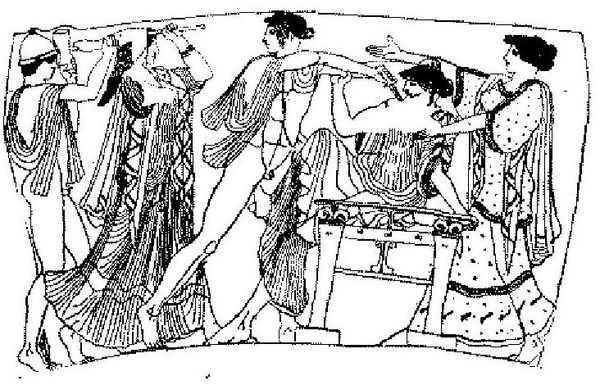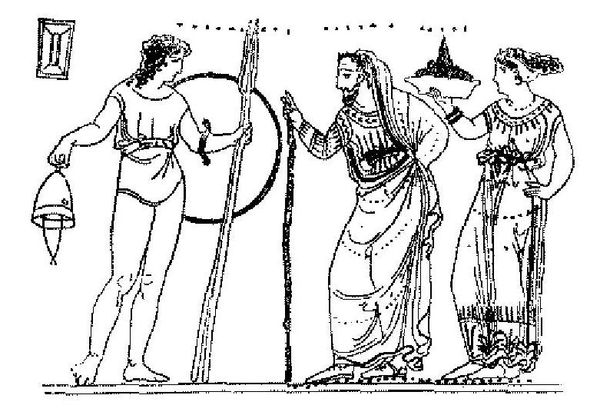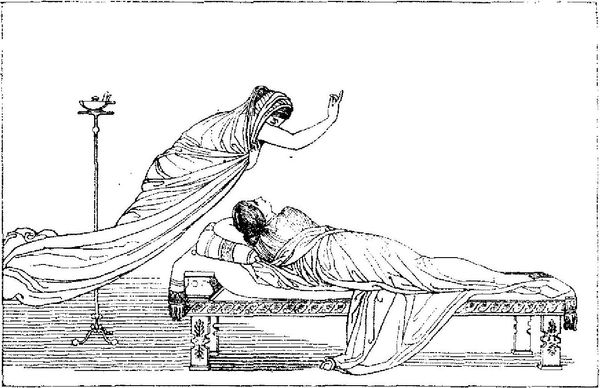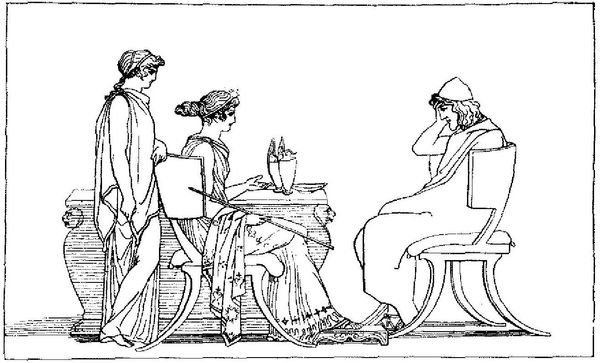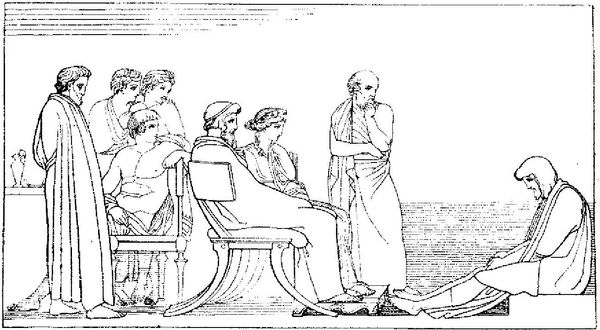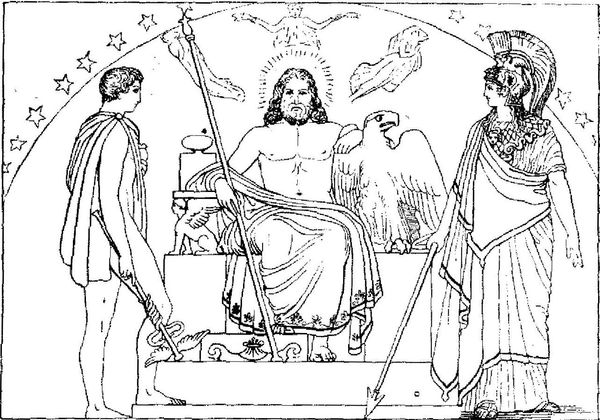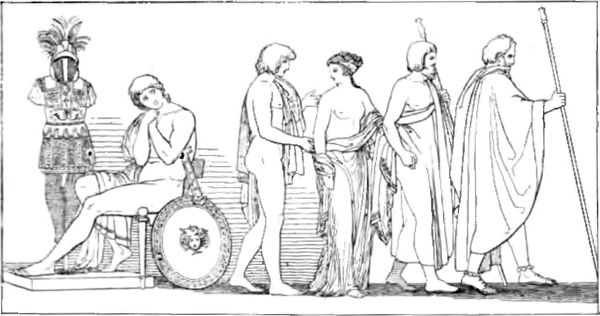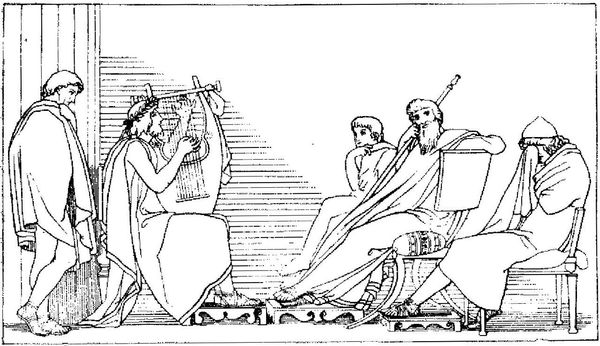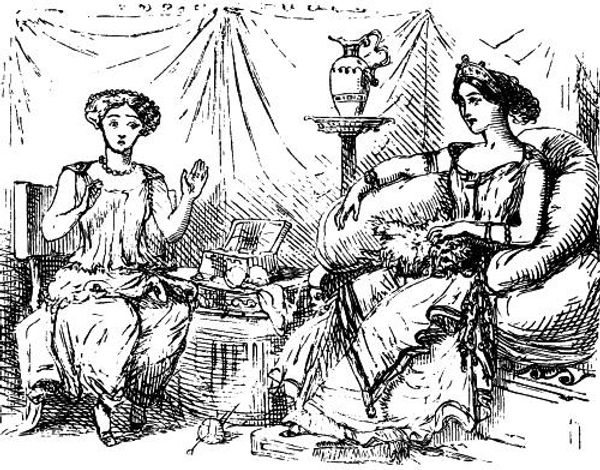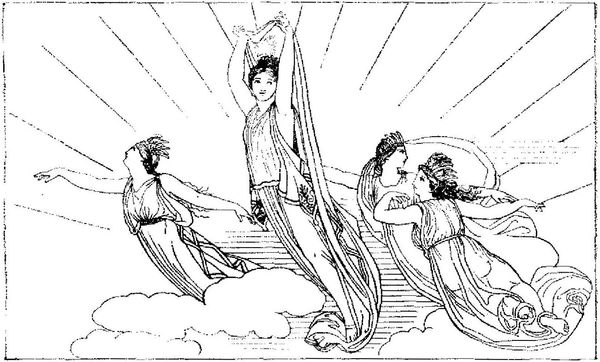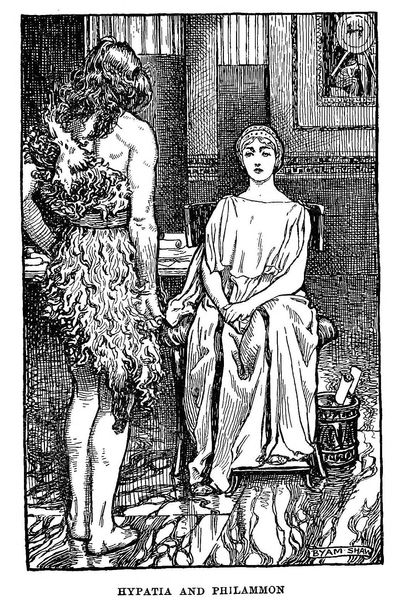
drawing, paper, ink
#
drawing
#
line-art
#
comic strip sketch
#
narrative-art
#
neat line work
#
neoclassicism
#
pen illustration
#
line drawing illustration
#
junji ito style
#
figuration
#
paper
#
line art
#
ink line art
#
linework heavy
#
ink
#
thin linework
#
line
#
history-painting
Copyright: Public domain
Curator: This line drawing, titled "Illustration to Odyssey," was created by John Flaxman in 1793. Executed in ink on paper, it presents a scene from Homer's epic. My first impression is one of stark simplicity and grace, the figures captured in an almost ethereal manner. Editor: Ethereal is the word! I’m struck by the visual vocabulary at play here. We immediately recognize Penelope and Odysseus through the loaded iconography of the loom. Though the illustration renders only their outline, it suggests Penelope's famous act of resistance and cunning, as she delays remarrying by claiming she must first weave a burial shroud for her father-in-law. Curator: Flaxman certainly emphasizes the weight of Penelope's task. The meticulous linework captures both the domestic labor she’s engaged in and its political implications. This image, created during a period of significant upheaval in Europe, speaks to anxieties around authority, stability and rightful leadership. Note the influence of ancient Greek vase painting in Flaxman’s work, particularly his use of contour lines and minimal shading to depict form. Neoclassicism was, after all, closely linked with Republicanism. Editor: Right. It’s a conscious attempt to connect to a past idealized as a time of virtue. Look at the quiet repose of Penelope, versus the figure who must be Odysseus here, given that spear; the visual emphasis, with his contrapposto stance and partial nudity, conveys heroism in a restrained register. Their pairing brings the concepts of domestic duty and adventurous wanderlust into quiet conversation with one another. And let’s note the decoration of the loom itself. In a visual environment utterly devoid of embellishment, there is a clear hierarchy of focus being articulated here. Curator: And Flaxman was keen to make artwork more widely available by rendering and disseminating outline illustrations. This particular rendering underscores how Flaxman leveraged the heroic and the monumental to subtly comment on 18th-century concerns around leadership and social unrest. This aesthetic would profoundly affect visual culture. Editor: Exactly, his style, rooted in those easily disseminated images, offered new means to visually reflect themes about love, family, duty, and deception, shaping popular understanding of classical narratives even today. Curator: The elegance of Flaxman’s vision here has certainly given me a renewed appreciation for the potency of these ancient tales within contemporary society. Editor: I concur; it's amazing how enduring the symbolic power of those classical tales really is.
Comments
No comments
Be the first to comment and join the conversation on the ultimate creative platform.
